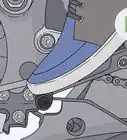X
wikiHow is a “wiki,” similar to Wikipedia, which means that many of our articles are co-written by multiple authors. To create this article, volunteer authors worked to edit and improve it over time.
This article has been viewed 41,633 times.
Learn more...
So you want to synchronize the carbs on your multi-carbed motorcycle? There are a couple of methods you can use: the vacuum gauge method (generally how it's done in a motorcycle shop) and the ball-bearing method. If you have vacuum gauges, try that approach, and if you don't, opt for the ball-bearing method.
Steps
Method 1
Method 1 of 2:
Using a Vacuum Gauge
-
1Make sure your carbs are clean and in perfect working order. Clean the bowls, the jets and passages, the rubber diaphragms under the top lid have no holes, and your carb needles, as well as the floats are hung in the right positions, as indicated by the workshop manual for your machine. Check the rubber manifolds for leaks, and make sure your idle mixture screws are adjusted to the indicated number of turns. Your bike should now idle somewhat peacefully.
- Twist the idle mixture screw on each carb - you will notice that the engine idles faster or slower. The spot where it idles fastest is the right one, find that on all the carbs, all the while re-adjusting your main idle to the revs indicated in your manual, usually a bit less than 1000 rpm on a 4-cylinder. Congratulations, you have adjusted and synchronized the idle speed!
-
2Pull off the little rubber covers, or screws, that hold the vacuum passage shut on each carb. Attach the hoses from the vacuum gauges, and start the engine. Preferably, it is already warmed up.Advertisement
-
3Open and close the throttle a few times, then let her idle. You will have noticed the indicating needles on the gauges going up when you open the throttle, and fluttering like mad when idling. First, let's take care of the fluttering.
- Every clock has a little screw, where the tube gets in or nearby. Twist that until the fluttering calms, but does not stop completely. Gun the engine in between adjusting, until all the needles on the clocks are fluttering somewhat calmly at idle. Open her up, and see those needles rise... to quite different places on the clock. Your next step will be to make them rise in unison.
-
4Loosen the countering nuts on the butterfly valve adjusting screw of each carb. Depending on your bike, you might have one carb that cannot be adjusted: that is the one to which the others have to be adjusted to.
- Loosen or tighten those screws, bit by bit, opening up the throttle in between, until all the needles on the gauges rise and fall simultaneously, in perfect harmony. This does take its time, and can be a bit frustrating, not to mention noisy. Patience and perseverance does it!
-
5Once you have acquired that, and have also tightened the countering nuts, and the needles are still in perfect synchronicity, voila! You have successfully synchronized your carbs! However, if your machine, and her carbs, is old and worn, you might never get those needles to behave like a well trained dance troupe. For all those that just want to keep the old beater running, preferably at a tolerable pace, there is a second way of adjusting it.
Advertisement
Method 2
Method 2 of 2:
Using Ball Bearings
-
1Use this method if you can't do it the "real" way. Maybe you don't have vacuum measuring gauges, are too poor to buy some, or the old horse is just too worn out for them to work correctly? Stuck in the middle of some godforsaken place without any mechanics, workshops, anything? Fear not, my friend, here's the bush method for synching your carbs. All you need is a few little metal balls from an old ball bearing, of about 5mm in diameter, one for each carb, easily found in any scrap yard, and added to your emergency tool kit.
-
2Check carbs for obvious leaks in the bodies or manifolds, by spraying brake cleaner (or lighter fluid) on them - carefully! If the engine revs higher when you spray a particular spot, that's where an air leak is. Close it with some liquid gasket or chewing gum. Yes, it works, at least for some miles. (Most of the times, this is what caused your previously nicely adjusted carbs to act up in the first place.)
-
3Empty the bowls, loosen the clamps and pull the carbs off! Leave them attached to the throttle. Place them, level, over a level cardboard box or something. Put a ball from a ball bearing in each.
-
4Slowly open the throttle. Stare in wonder at the butterfly valves opening. Listen to the sound of the little balls falling through onto the cardboard - "ploploploplop". Adjust the butterfly valve screws until you hear just one plop. There you go, carbs are synched up!
-
5Re-attach the carbs, and all their hoses. Ride off into the sunset!
Advertisement
Warnings
- When checking your carbs for leaks by spraying highly-combustible liquids on them, make sure to be in close vicinity of open flame for maximum effect and manly scars to show off later.⧼thumbs_response⧽
Advertisement
About This Article
Advertisement
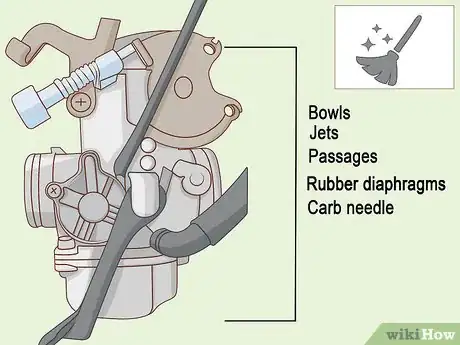

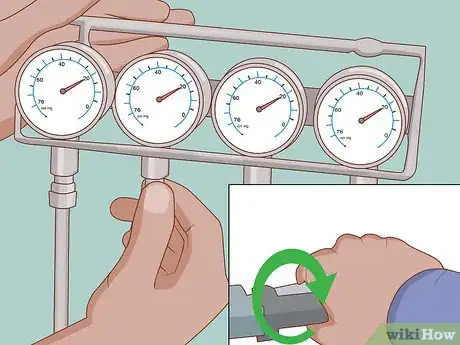
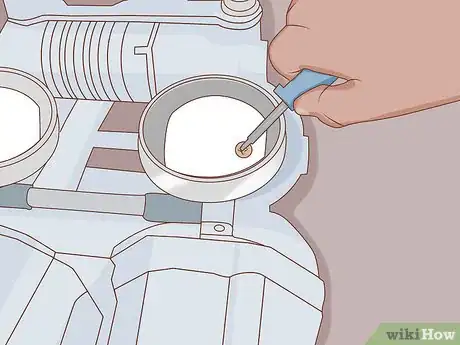


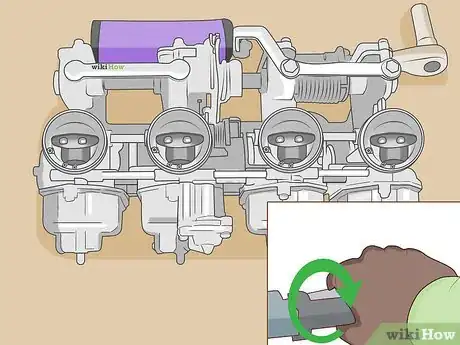
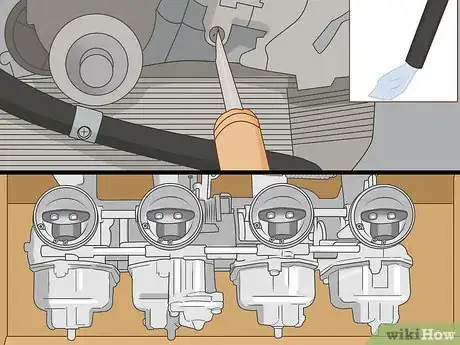
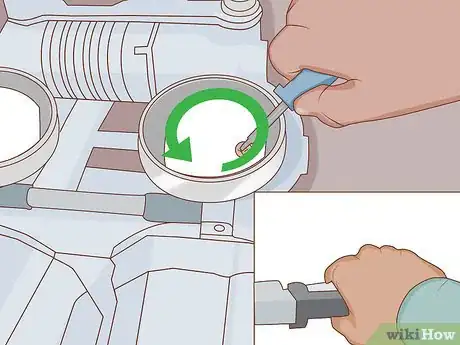

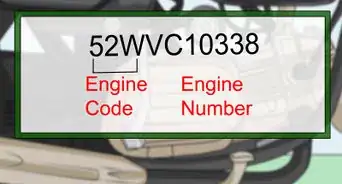
-Step-13.webp)
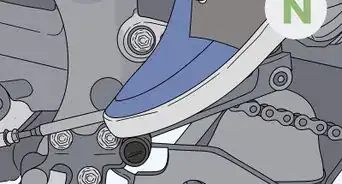



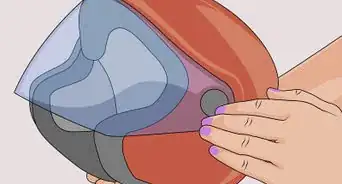
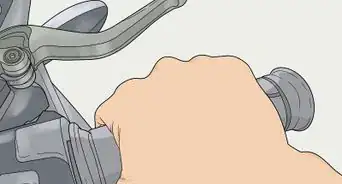
-Step-17.webp)

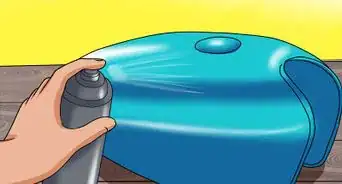






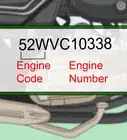
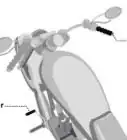
-Step-13.webp)
